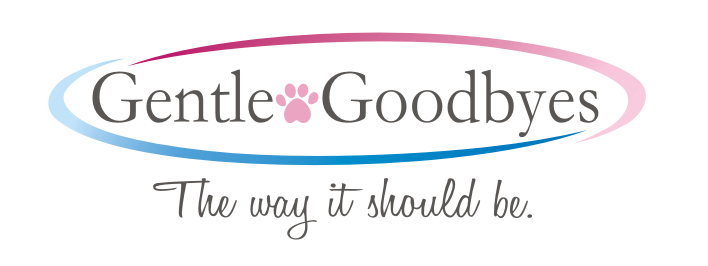Follow Us x
----Dave K and Shaylee, 3/12/18
The appointment
You will have an appointment time at your home that will be prescheduled by a Gentle Goodbyes veterinary assistant. We understand that trying to schedule a specific day and time for a euthanasia is one of the most difficult decisions that you will ever have to make in your life. Feeling comfortable that your choice is the correct one can also be extremely difficult. Even veterinary professionals have a difficult time deciding when to euthanize their own pets.
Again, please remember that early intervention in making your pet comfortable for the last time is always preferred to watching them struggle to live. To help you in making a more informed decision about your pet's health and happiness status please visit our page titled Quality of Life and browse our Quality of Life Worksheet.
It is not uncommon for animals with long term disease processes to de-compensate rapidly towards the end of their lives. If this happens it can make having an in-home euthanasia for your pet more difficult to achieve if he or she is in an emergency situation. A euthanasia should be considered an emergency if your pet is having trouble breathing, is in an unbearable amount of pain, has not eaten for more than three days, is persistently seizuring, or is suddenly weak or collapsed. Please refer to the Quality of Life page for more information.
Our arrival
We will arrive at a prescheduled time. We appreciate having the opportunity to meet your pet at his or her own home. We understand that we are meeting your pet at a time when he or she is only a fraction of who they used to be. Even at this point in time, we can get an idea of who your pet had been before he or she became ill.
If you have not already done so, we will create a comfortable bed for your pet and get any supplies ready. We will then ask you to sign a consent form which gives us permission to proceed forward with the euthanasia. The consent form also asks you to verify that your pet has not bitten anyone in the past 10 days which is a state law requirement.
Most people find that settling any paperwork/financial transactions at the beginning of the visit makes it easier for them to focus on their pet during the euthanasia and will give them the opportunity to grieve privately and peacefully afterwards.
The euthanasia
Before the euthanasia is performed, we will sedate your pet. Sedation is the process of giving a drug which will make your pet extremely sleepy or which will place him or her into a state of anesthesia. In this condition your pet will either be groggy and dull to stimulus or they will not be aware of what is happening around them. This sedated period will allow you to have a transition period with your pet where you can sit with him or her in a state where they are calm and sleeping deeply.
Sedation is typically accomplished by giving an injection into the muscle, also known as an intramuscular injection. After we give this injection your pet will get gradually sleepier until he or she is no longer aware of his environment. It usually takes between 2 to 8 minutes for the sedative injection to work and we encourage you to hold your pet during this time until he or she falls quietly into a deep state of sedation in your arms.
The initial sedative injection does not hurt any more than a vaccination injection would hurt. We use gentle restraint and the smallest needle possible. We do everything possible to make this initial injection as stress free and painless as possible for your pet, however, it is an injection and some animals may react to this injection. Typically, the worst reaction would be for them to vocalize as we give it. Despite the slight discomfort the sedative injection may cause your pet, we believe that its positives benefits strongly outweigh any negative reaction. Through years of experience we have learned that an initial sedative injection makes the final injection of the euthanasia solution, much, much easier on your pet.
It is very important that you understand that when it is time to give the euthanasia solution, the only way to administer the euthanasia drugs is into a vein (or intravenously). Giving a medication intravenously means that we need to place a set volume of the drug into a vein in order to have the correct effect. In order to accomplish this, once your pet is sedated, we will place an IV line (also called an IV catheter) which will allow us to give the correct volume of drug. We will typically be working around your pets' hind leg so that you and your family can gather at the front of your pet. Because your pet is under deep sedation or general anesthesia there will be no discomfort associated with placing this IV catheter.
Getting access to a vein in a sick or debilitated animal to give a drug intravenously is a difficult and delicate medical skill. Even in the best of circumstances when your pet is healthy and its veins are strong, getting access to a vein is not always easy. To make the process of accessing a vein as smooth as possible, and for the highest chances of success, we will need your assistance in keeping your pet as quiet and still as possible. Having good lighting in the area and a spacious working environment is also extremely helpful in allowing us to have the best chances of success.
Because the euthanasia solution is given intravenously its effects happen very quickly. Typically, it will start to work within one minute of administering it. You will first notice your pet's breathing cease. In a few minutes, the heart will follow. Sometimes there will be post-life breathing motions or muscle twitching. These are normal reflex motions that occur after your pet is deceased. We will confirm your pet's death with a stethoscope.
The majority of the time death will occur gently and peacefully with the injectable sedatives and euthanasia medications that we use. These drugs have been developed just for this purpose. On rare occasions there can be some adverse reactions. Please refer to the Frequently Asked Questions page for more specific information about the euthanasia process.
After the euthanasia
If we are not taking your pets remains we will leave you and your family with your pet to celebrate his or her life and to mourn his or her passing. We recognize how huge this day is to your family and the impact that your pet's death will have on your lives. We want you to be able to grieve comfortably and privately.
If we are taking your pet for cremation purposes we will step outside to give you time to grieve alone as a family. When we return we will respectfully carry your pet outside to our vehicle. We suggest you say goodbye to your pet in your home, so your last memories are not of us transporting him or her away. We will arrange to have your pet brought to the crematorium. If you requested to have your pet's ashes returned, the crematorium will typically contact you within 10-14 business days. We promise to treat your pet's remains carefully and with dignity and respect. We feel honored to have been a part of your pet's life and to have been able to have met your pet at his or her own home. We know that your pet is grateful as well.
Please refer to the FAQ page for more information about the cremation process.




